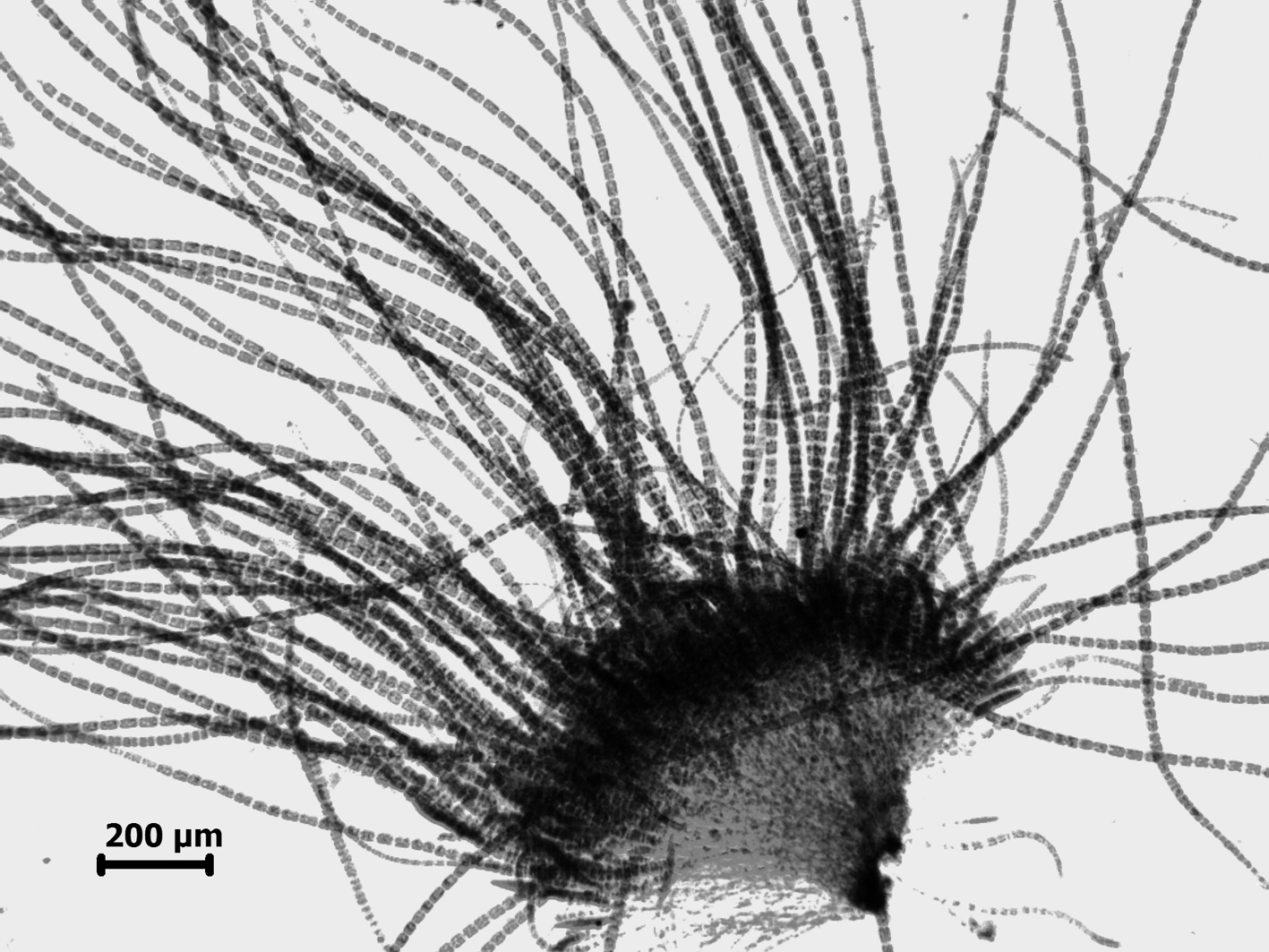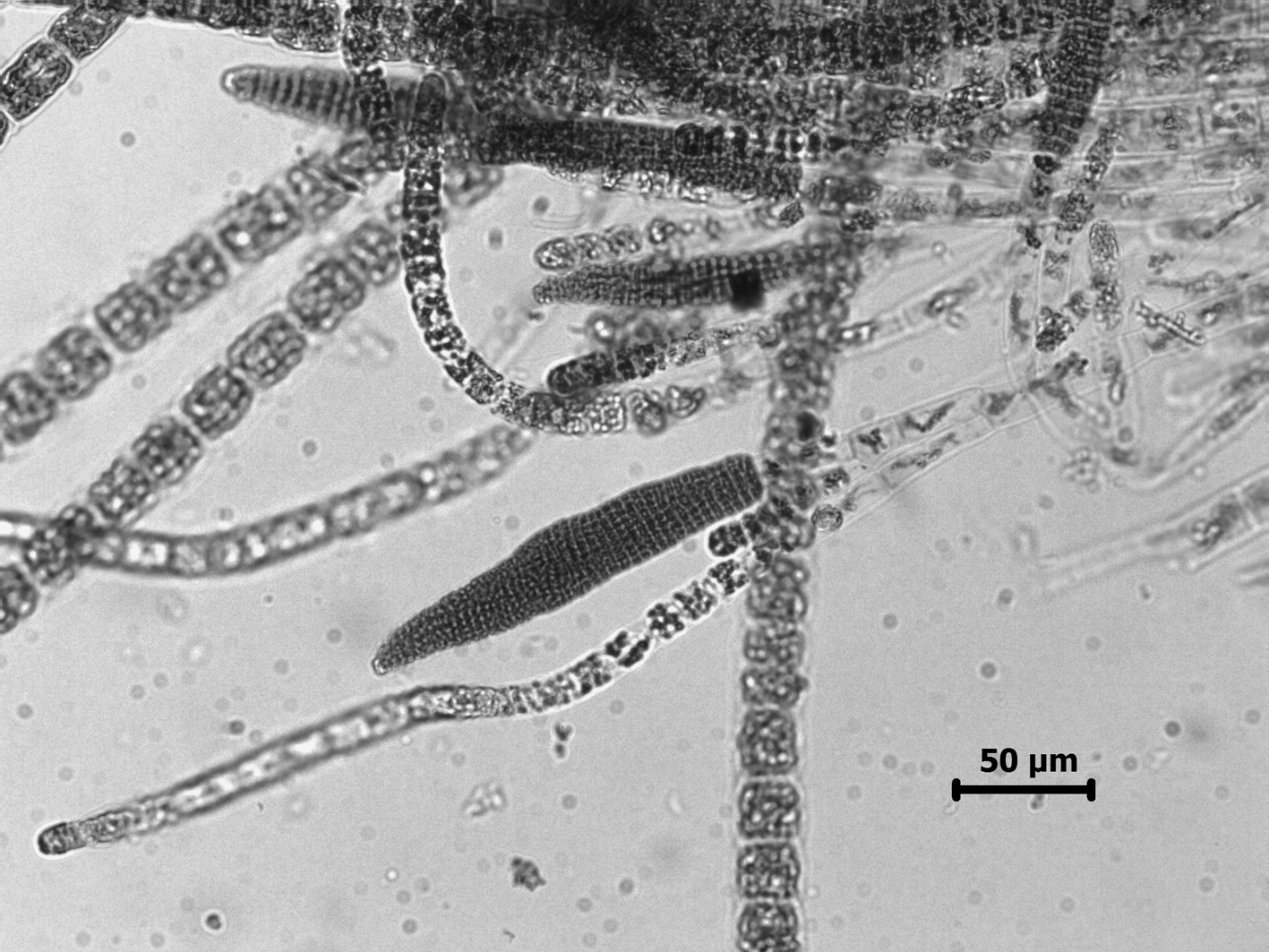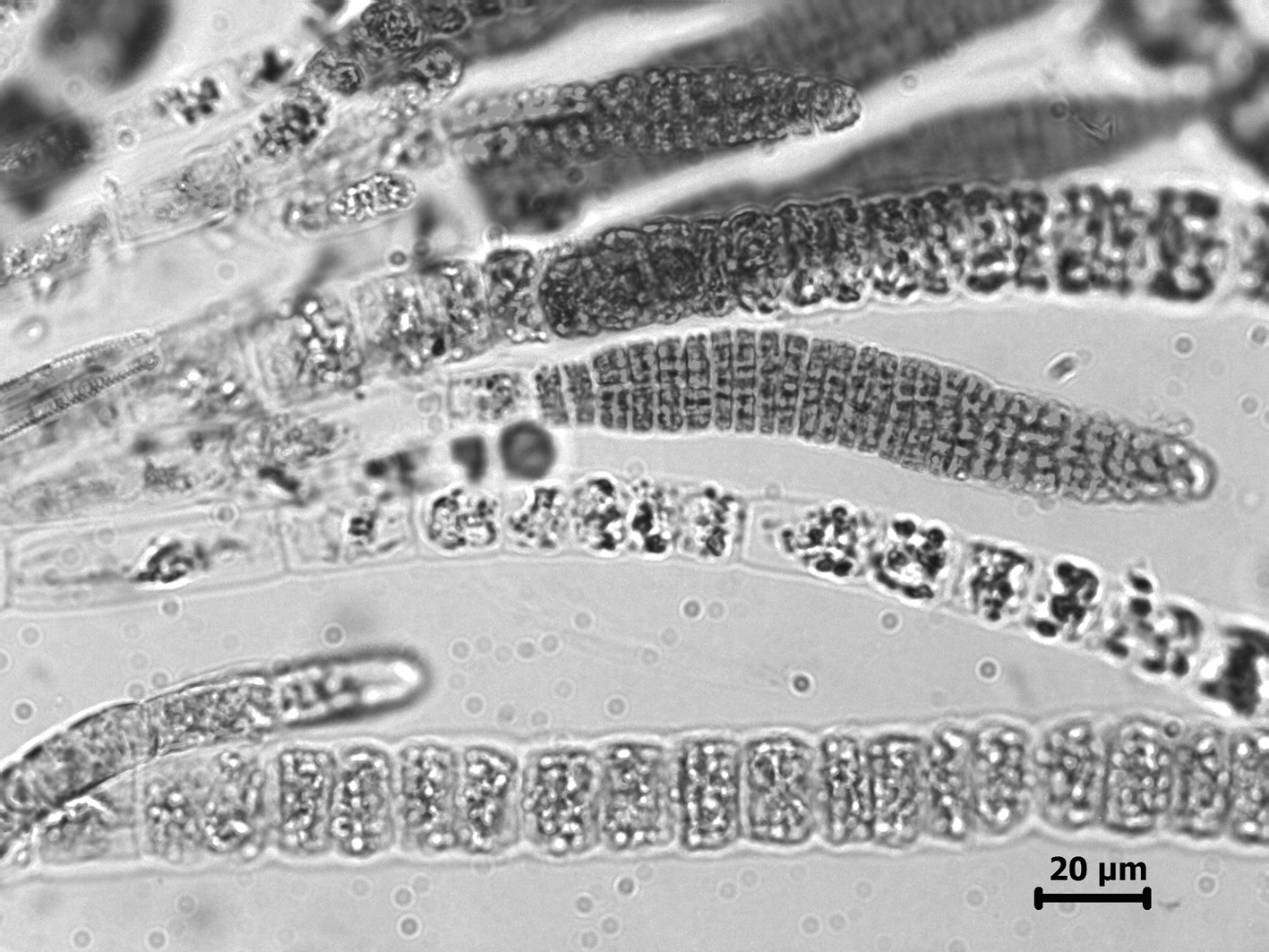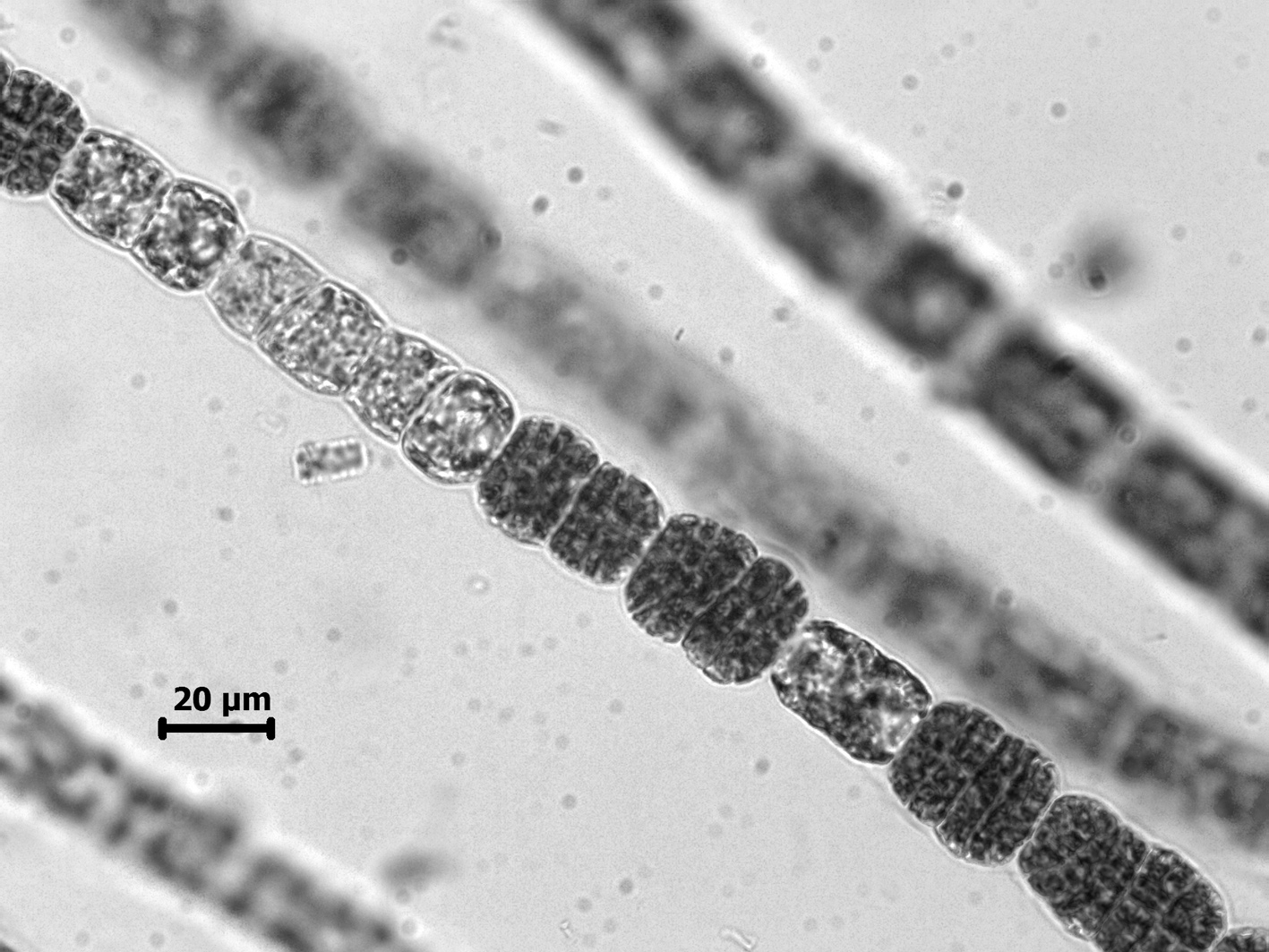Seaweeds of the South African South Coast


Order Ectocarpales
Family Chordariaceae
Elachistiella endarachnae (H.Stegenga, J.J.Bolton, & R.J.Anderson) V.Cassano, Y.Yoneshigue-Valentin, & M.J.Wynne 2004: 335
Plants forming tiny brown cushions, up to 0.5 mm tall, usually on the blades of Petalonia (ex Endarachne) binghamiae, but also found on other large seaweeds (see below). Structure of entangled basal filaments attached by rhizoids; radiating erect, branched filaments forming a pseudoparenchymatous medulla, filaments 6-20 µm in diameter; medulla bearing cortex of erect assimilatory filaments each up to 22.5 µm in diameter, with basal meristematic zone and cells cylindrical to somewhat barrel-shaped, each containing several disc-shaped or irregularly-shaped parietal plastids. Lateral branches of filaments arising below meristematic zone and developing into new assimilatory filaments or plurilocular sporangia and paraphyses. Paraphyses curved, up to 15(-20) cells long, ca. 14 µm in diameter, with few plastids.
Plurilocular sporangia solitary, conical to cylindrical, multiseriate, up to 150 µm long and 30 µm in diameter, containing up to 50 rows of loculi, each row with many small loculi. Plurilocular structures also formed in mid to apical regions of assimilatory filaments and sometimes in apical cells of paraphyses, by transformation of vegetative cells that barely increase in diameter.
Collections, ecology and regional distribution
Reported to be epiphytic on Petalonia binghamiae. Recorded from the type locality at Morgan Bay but also found at Mkambati (43-47), epiphytic on Halimeda cuneata and Anthophycus longifolius; bearing multilocular sporangia, presence of paraphyses however doubtful. Although the substrata are completely different from Petalonia (Endarachne) and each other, the plants were completely similar, with similar dimensions, so that there is no reason to consider a different identity.
World distribution: South African endemic.
Type locality: Morgan Bay, Eastern Cape, South Africa (Stegenga et al. 2002).
Notes: 1. This species was originally described as Elachista endarachne (Stegenga et al. 2002), but the new genus Elachistiella V.Cassano, Y.Yoneshigue-Valentin, & M.J.Wynne was erected to accommodate it and an Elachista species from Brazil, based on their possession of two types of plurilocular structures: multiseriate “ectocarpoid” structures developing from the apices of filaments, and intercalary structures.

Elachistiella endarachnae slide of type specimen (BOL), 2-3 mm long, showing basal portion and erect filaments.

Elachistiella endarachnae slide of type specimen (BOL), detail of basal portion and erect filaments.

Elachistiella endarachnae detail of basal portion.

Elachistiella endarachnae terminal plurilocular sporangia.

Elachistiella endarachnae detail of terminal plurilocular sporangia.

Elachistiella endarachnae intercalary plurilocular sporangia.
References Elachistiella
Cassano, V., Yoneshigue-Valentin, Y. & Wynne, M. J. (2004). Elachistiella leptonematoides gen. et sp. nov. (Elachistaceae, Phaeophyceae) from Brazil. Phycologia 43: 329-340.
Stegenga, H., Bolton, J. J. & Anderson, R. J. (2002). Elachista endarachnae sp. Nov. (Phaeophyceae, Elachistaceae), a peculiar representative of the genus in South Africa. Phycologia 41: 432-435.
Cite this record as:
Anderson RJ, Stegenga H, Bolton JJ. 2016. Seaweeds of the South African South Coast.
World Wide Web electronic publication, University of Cape Town, http://southafrseaweeds.uct.ac.za; Accessed on 07 January 2026.